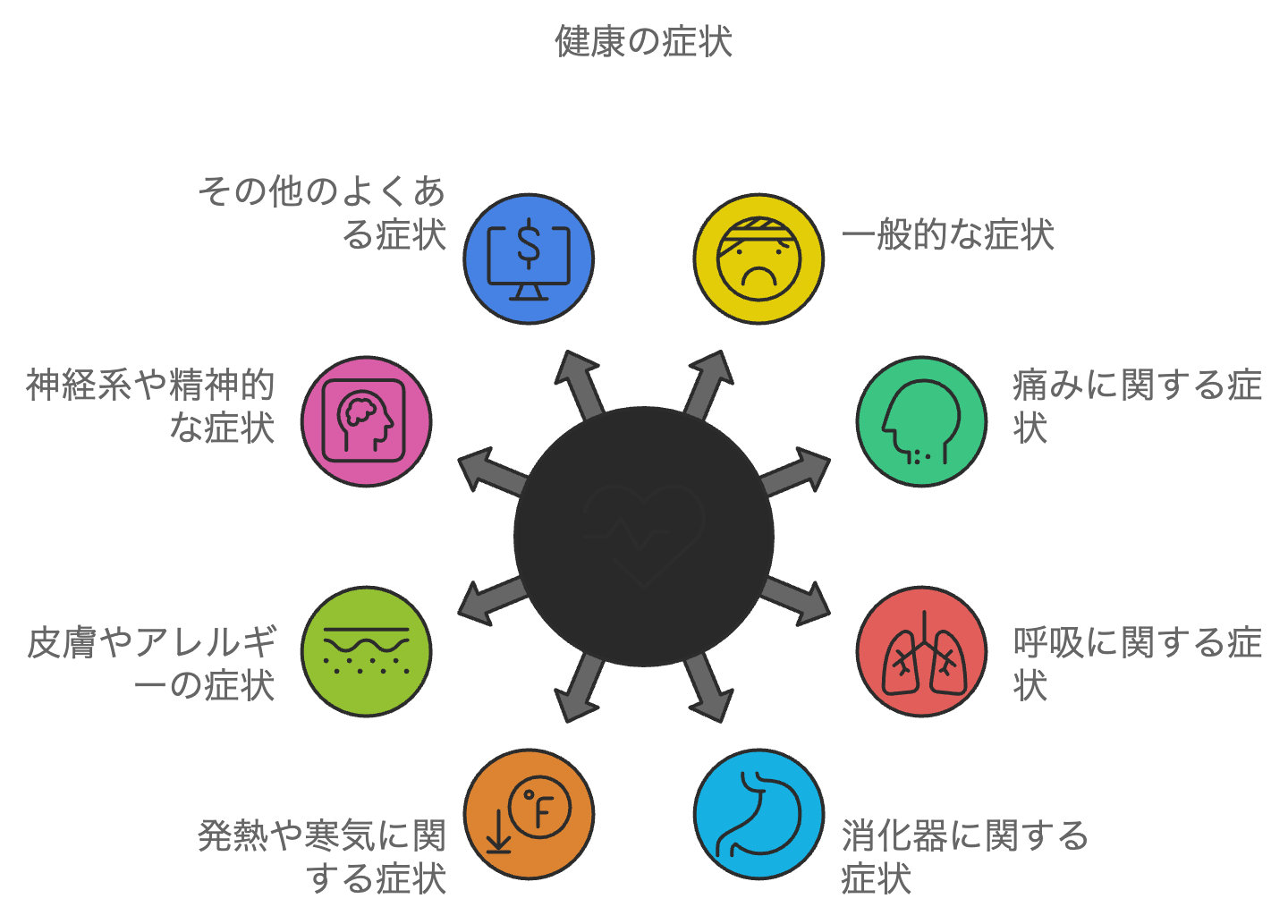循環器内科における虚血性心疾患(狭心症、心筋梗塞)の診察に関する英語フレーズと会話例
循環器内科では、**虚血性心疾患(Ischemic Heart Disease, IHD)**の診察と治療が行われます。**狭心症(Angina Pectoris)や心筋梗塞(Myocardial Infarction, MI)**など、心臓への血流が不足することで生じる症状に対応することが重要です。
この記事では、虚血性心疾患を訴える患者との診察を想定し、具体的な会話例と重要なフレーズを学べる内容にします。
患者の設定
- 名前: Kazuo Yamada (62歳、男性)
- 職業: 会社員
- 主な症状: 数か月前から胸の痛みが断続的に発生し、最近は運動をすると胸が締め付けられるような感じが強くなる。
- 既往歴: 高血圧、喫煙歴あり
- 生活習慣: 仕事のストレスが多く、運動はほとんどしていない。
診察の流れと会話例
1. 初診での問診と症状の確認
Doctor: “Good afternoon, Mr. Yamada. I understand you’ve been experiencing some chest pain recently. Can you tell me more about when it happens and what it feels like?”
日本語訳: 「こんにちは、山田さん。最近胸の痛みがあるとお聞きしましたが、いつ頃起こり、どんな感じですか?」
Patient: “Yes, it started a few months ago. At first, it would happen only occasionally, but now it happens almost every time I exercise or walk uphill. It feels like a tightness or pressure in my chest.”
日本語訳: 「はい、数か月前に始まりました。最初は時々起こるだけでしたが、今では運動や坂道を登るたびにほぼ必ず起こります。胸に締め付けられるような痛みや圧迫感があります。」
Doctor: “I see. So, you feel a tightness or pressure in your chest during physical activity. Does the pain go away when you rest?”
日本語訳: 「なるほど。運動中に胸に締め付け感や圧迫感があるということですね。休むと痛みはなくなりますか?」
Patient: “Yes, it usually goes away after a few minutes of rest.”
日本語訳: 「はい、数分休むとだいたい痛みはなくなります。」
2. 病歴とリスクファクターの確認
Doctor: “Have you noticed any other symptoms, like shortness of breath, dizziness, or sweating during these episodes?”
日本語訳: 「その痛みがある時、息切れやめまい、発汗など他の症状は感じましたか?」
Patient: “Sometimes I feel short of breath, especially when I try to push through the pain. I also feel lightheaded occasionally.”
日本語訳: 「痛みを我慢しようとすると、息切れを感じることがあります。また、時々めまいも感じます。」
Doctor: “Do you have any history of heart disease in your family? And do you smoke or have any other health conditions like high blood pressure or diabetes?”
日本語訳: 「ご家族に心臓病の既往歴はありますか?また、喫煙をしていたり、高血圧や糖尿病など他の健康問題はありますか?」
Patient: “My father had a heart attack in his 60s, and I used to smoke, but I quit a few years ago. I’ve been treated for high blood pressure for several years.”
日本語訳: 「父が60代で心筋梗塞を起こしました。私は以前喫煙していましたが、数年前にやめました。高血圧の治療は数年間受けています。」
3. 検査の必要性と診断の説明
Doctor: “Given your symptoms and risk factors, it’s important to check for ischemic heart disease, including angina or myocardial infarction. We’ll perform some tests, including an electrocardiogram (ECG) to check your heart’s electrical activity, and possibly a stress test or coronary angiography to examine the blood flow to your heart.”
日本語訳: 「症状とリスク要因を考えると、狭心症や心筋梗塞を含む虚血性心疾患を確認することが重要です。心電図(ECG)で心臓の電気的活動を確認し、ストレステストや冠動脈造影で心臓への血流を調べる必要があるかもしれません。」
Patient: “Are these tests dangerous?”
日本語訳: 「これらの検査は危険ですか?」
Doctor: “No, the ECG is non-invasive and painless. The stress test involves exercising while monitoring your heart, and if necessary, we might do a coronary angiography, where we inject dye into your blood vessels to see any blockages. It’s a safe procedure, but we’ll explain everything in detail before we proceed.”
日本語訳: 「いいえ、心電図は侵襲性がなく痛みもありません。ストレステストは運動中に心臓をモニタリングします。必要があれば、冠動脈造影を行い、血管に造影剤を注入して閉塞の有無を確認します。安全な検査ですが、進める前に詳細を説明します。」
4. 狭心症や心筋梗塞の治療と予防
Doctor: “If the tests show angina or blockages in your coronary arteries, we’ll discuss treatment options. This may include medications to improve blood flow, such as nitroglycerin or beta blockers, and lifestyle changes like quitting smoking, improving your diet, and increasing exercise. In more severe cases, we may consider procedures like angioplasty or bypass surgery.”
日本語訳: 「検査で狭心症や冠動脈の閉塞が確認された場合、治療法について話し合います。ニトログリセリンやベータブロッカーなど血流を改善するための薬物療法や、禁煙、食事改善、運動の増加などの生活習慣の改善が含まれます。より重篤な場合には、血管形成術やバイパス手術を検討することもあります。」
Patient: “Will I need surgery?”
日本語訳: 「手術が必要ですか?」
Doctor: “Surgery is usually only necessary if there are significant blockages that can’t be managed with medication alone. We’ll try to manage your condition with medications and lifestyle changes first, and only consider surgery if it’s necessary.”
日本語訳: 「手術は、薬だけでは管理できない重大な閉塞がある場合にのみ必要です。まずは薬と生活習慣の改善で状態を管理し、手術が必要かどうかを判断します。」
5. 生活習慣と虚血性心疾患の予防法
Doctor: “In addition to medication, lifestyle changes are critical to preventing further heart problems. Quitting smoking, maintaining a healthy diet, and getting regular exercise are all essential. Managing stress and getting enough sleep can also help reduce the strain on your heart.”
日本語訳: 「薬に加えて、生活習慣の改善はさらなる心臓疾患を防ぐために非常に重要です。禁煙、健康的な食事、定期的な運動が必要です。ストレス管理や十分な睡眠も心臓への負担を軽減するのに役立ちます。」
Patient: “I’ve already quit smoking, but I’m not sure about my diet. What kind of changes should I make?”
日本語訳: 「すでに禁煙しましたが、食事については自信がありません。どんな改善をすればいいですか?」
Doctor: “Focus on eating more fruits and vegetables, lean proteins, and whole grains, and reduce your intake of saturated fats, salt, and sugar. We can refer you to a dietitian to help create a heart-healthy eating plan.”
日本語訳: 「果物や野菜、赤身のたんぱく質、全粒穀物を多く摂り、飽和脂肪、塩、砂糖の摂取を減らしましょう。栄養士に相談して、心臓に良い食事プランを作るお手伝いもできます。」
学習ポイント
- 症状の確認: 胸の痛みや圧迫感に関する症状を確認するためのフレーズを学びましょう。例: “Do you feel a tightness or pressure in your chest when you exercise?“(運動中に胸に締め付け感や圧迫感を感じますか?)
- リスクファクターの確認: 家族歴やリスク要因を確認するフレーズを学びます。例: “Do you have a family history of heart disease or stroke?“(ご家族に心臓病や脳卒中の既往歴はありますか?)
- 検査の説明: 心臓に関する検査を説明するためのフレーズを学びましょう。例: “We’ll perform an electrocardiogram to check your heart’s electrical activity.“(心臓の電気的活動を確認するために心電図を行います。)
- 生活習慣の改善: 心臓の健康を維持するための生活習慣の改善に関するアドバイスも重要です。例: “Quitting smoking and improving your diet can significantly reduce your risk of future heart problems.“(禁煙や食事の改善は、将来の心臓病リスクを大幅に減らすことができます。)
関連キーワード: 虚血性心疾患, 狭心症, 心筋梗塞, 循環器内科, 冠動脈造影, 生活習慣改善, 英語会話例, 外国人対応


